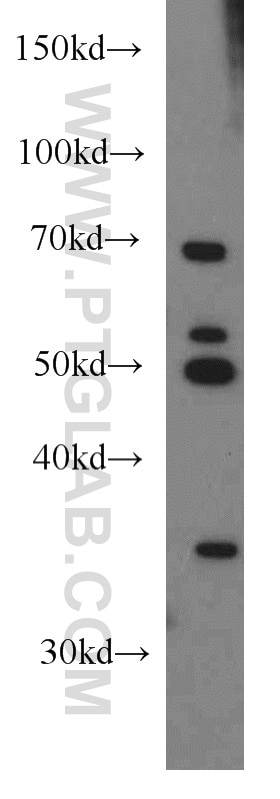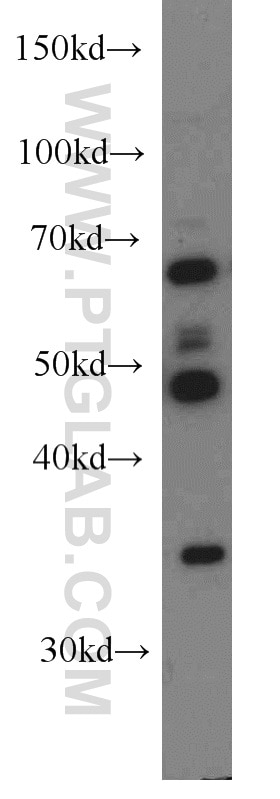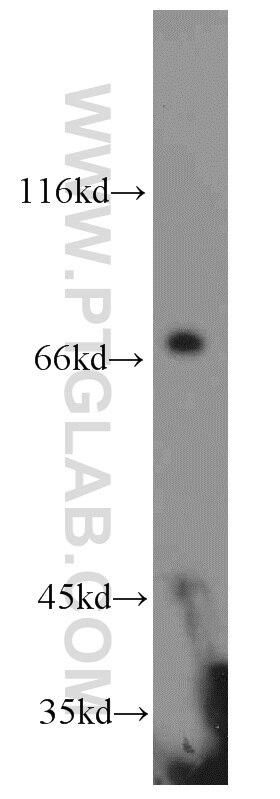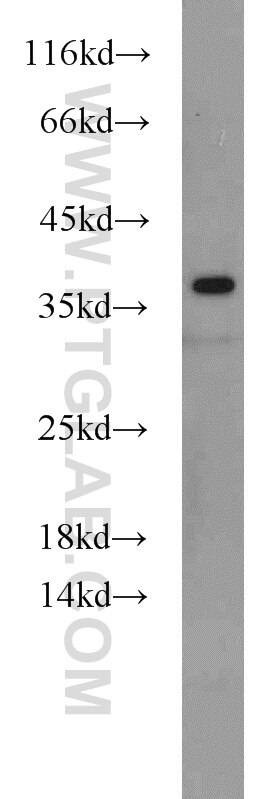Product Information
55379-1-AP targets HLA-F in ELISA applications and shows reactivity with human, mouse samples.
| Tested Reactivity | human, mouse |
| Host / Isotype | Rabbit / IgG |
| Class | Polyclonal |
| Type | Antibody |
| Immunogen |
Peptide Predict reactive species |
| Full Name | major histocompatibility complex, class I, F |
| Calculated Molecular Weight | 50 kDa |
| Observed Molecular Weight | 50 kDa, 66-70 kDa |
| GenBank Accession Number | NM_018950 |
| Gene Symbol | HLA-F |
| Gene ID (NCBI) | 3134 |
| RRID | AB_10863292 |
| Conjugate | Unconjugated |
| Form | Liquid |
| Purification Method | Antigen affinity purification |
| UNIPROT ID | P30511 |
| Storage Buffer | PBS with 0.02% sodium azide and 50% glycerol, pH 7.3. |
| Storage Conditions | Store at -20°C. Stable for one year after shipment. Aliquoting is unnecessary for -20oC storage. 20ul sizes contain 0.1% BSA. |
Background Information
Human major histocompatibility complex (MHC) antigens, also referred to as human leukocyte antigens (HLA), are encoded by genes located on the short arm of chromosome 6 (6p21.3). There are two classes of HLA antigens: class I and class II. This class I molecules are membrane glycoproteins composed of a heavy (alpha) chain which is encoded by a HLA class I gene, and β2-microglobulin light (beta) chain. The most extensively characterized members of the HLA class I gene family are the genes encoding the major transplantation antigenes, HLA-A, B and C. HLA-F is a non-classical MHC class I molecule. (PMID: 667938; 3375250; 2249951)
Protocols
| Product Specific Protocols | |
|---|---|
| WB protocol for HLA-F antibody 55379-1-AP | Download protocol |
| Standard Protocols | |
|---|---|
| Click here to view our Standard Protocols |










